Ancient knowledge at the service of health
This article is the first in a series of three articles dedicated to Chinese pharmacopoeia, the other two being devoted to the recipe and the prescription. Their aim is to demystify this discipline and allow the reader to grasp the full value and wisdom it contains.
Chinese pharmacopoeia, a cornerstone of Traditional Chinese Medicine (TCM), is a discipline with a history spanning millennia. It incorporates a holistic understanding of the human being, considered an inseparable unity of body and mind.
Rooted in the principles of Taoism, it is based on the dynamic balance of qi (vital energy), yin and yang, and the five elements (wu xing: Wood, Fire, Earth, Metal, Water). TCM views health as a state of harmony between the individual and their environment, influenced by the seasons, emotions, and cosmic cycles.
Foundational texts, such as the Shen Nong Ben Cao Jing (Shenn Nong’s Classic of Materia Medica, c. 200 BCE) and Zhang Zhongjing’s Shang Han Lun (2nd century CE), codified the properties of medicinal substances, their combinations, and their therapeutic applications. These works describe hundreds of remedies, primarily plant-based, but also animal and mineral. Each remedy is characterized by its nature (sì qì: cold, cool, warm, hot), its flavor (wǔ wèi: pungent, sweet, sour, bitter, salty), and its energetic tropism (meridians or target organs).
Chinese pharmacopoeia is not limited to the isolated use of substances. It relies on prescriptions (fāng) in which several ingredients act synergistically to treat complex imbalances of the mind and body. This systemic approach, which combines empirical observation and philosophical principles, aims to restore the harmonious circulation of qì, correct yin-yang imbalances and eliminate pathogenic factors (bìng xié).
A wide variety of natural substances
Chinese medicine therefore uses plant-based substances, as well as animal, mineral, fungal, and organic substances. Each is selected for its specific properties and its action on the meridians, organs, and energy flows.
These remedies work synergistically to treat the individual. Through this ancestral knowledge, Chinese medicine does not simply cure: it prevents, harmonizes, and balances the individual in their physical, emotional, and spiritual dimensions.
Plant Substances
Plants dominate the Chinese pharmacopoeia; they represent approximately 80% of the substances. Different parts of plants are used (see below). For example, fruits (guǒ), such as Shān Zhā (Crataegus pinnatifida), facilitate the digestion of fats. Rhizomes, such as Huáng Lián (Coptis chinensis), drain fire from the Heart and Stomach and are used for mouth ulcers or irritability.
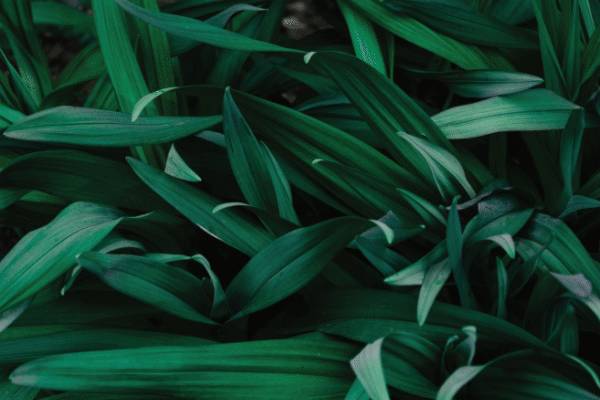
Animal Substances
Animal substances, although less common, are essential in certain contexts. Lù Jiǎo (deer antler) tonifies Kidney Yang. It is indicated for sexual weakness or lower back pain. Mǔ Lì (oyster shell) grounds Yang and calms the mind. It is prescribed for insomnia or restlessness. Their use is strictly regulated to respect ethical principles and natural cycles.

Minerals are also used in traditional remedies. For example, Shí Gāo (gypsum) soothes excessive heat in high-fever syndromes. Zhū Shā (cinnabar) calms the mind, but its use is limited due to its toxicity. Lóng Gǔ (fossilized dragon bone) grounds the mind and stabilizes emotions.
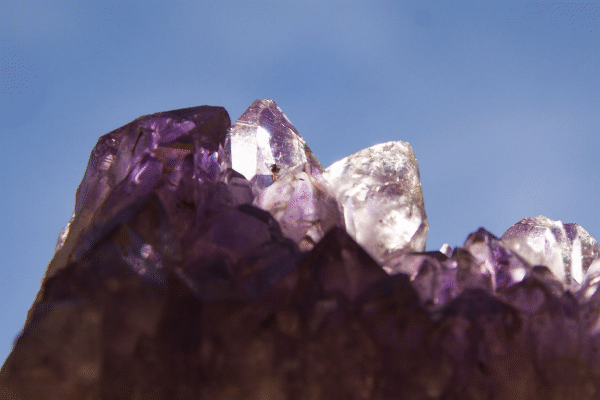
Fungal Substances
Fungal substances are also used. For example, Fú Líng (Poria cocos), a fungus, acts on dampness and the Spleen, promoting the elimination of pathogenic fluids. These substances are considered intermediaries between the plant and mineral realms; they embody the Earth element.
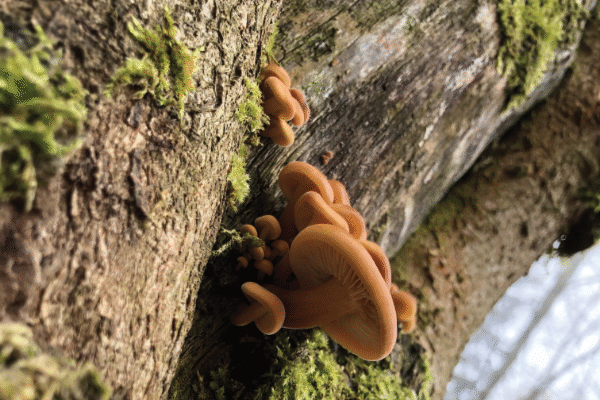
The different plant substances
In traditional Chinese medicine, the various parts of medicinal plants are utilized: roots, leaves, stems, flowers, bark, and seeds. Each part is used for its unique therapeutic properties.
Each part is associated with one of the five elements (Earth, Wood, Fire, Metal, Water). It plays a specific role in restoring the balance of qi, yin, and yang.
Roots, such as Dǎng Shēn or Huáng Qí, tonify and nourish, conveying the concept of Earth’s stability.
Leaves, such as Bò He, disperse wind and target the superficial layers, embodying the vitality of Wood. Stems, such as Pú Gōng Yīng, regulate energy flow. Flowers, such as Jú Huā, soothe emotions associated with Fire.
Finally, barks, such as Dù Zhòng—associated with Metal—protect and strengthen. And seeds, like Gǒu Qǐ Zǐ, concentrate the vital essence of Water.
Harvested at precise times to maximize their energy, these parts are combined in synergistic formulas, reflecting a holistic approach where each element contributes to harmonizing body and mind.
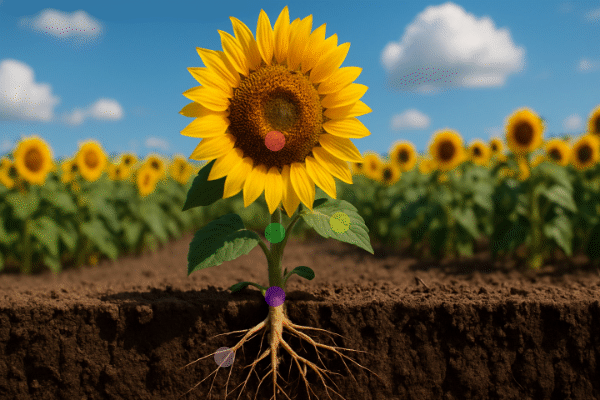
A closer look at plant substances
The roots (Gēn)
Roots (gēn) are among the most frequently used plant parts due to their high concentration of active ingredients, associated with the Earth element, a symbol of stability and nourishment.
They are harvested in autumn or winter, when the plant’s energy is concentrated underground. For example, Dǎng Shēn (Codonopsis pilosula) tonifies the Spleen and Stomach Qi. It is used in cases of chronic fatigue or digestive disorders.
Huáng Qí (Astragalus membranaceus), another tonifying root, strengthens defensive Qi (wèi qì) to support immunity and prevent infections. Roots like Shēng Dì Huáng (Rehmannia glutinosa) nourish Yin and are prescribed for Yin deficiency syndromes, such as thirst or hot flashes.
The Leaves (Yè)
The leaves (yè), associated with the Wood element, capture the energy of wind and movement. They are harvested in spring or summer, when their vitality is at its peak.
Sāng Yè (Morus alba) disperses wind-heat in lung ailments, such as dry coughs or mild fevers.
Bò He (Mentha haplocalyx), with its aromatic leaves, clears the surface (biǎo) by promoting sweating in cases of external attack syndromes. Their action is often ascending and dispersing, targeting the superficial layers of the body.
The Stems (Jīng)
The stems (jīng) regulate the movement of qi, whether ascending (shēng) or descending (jiàng). Harvested in spring, they embody the vigor of the sap.
Pú Gōng Yīng (Taraxacum mongolicum) drains damp-heat and is used for urinary tract infections and abscesses.
Húo Má Rén (Cannabis sativa, stem) acts on the intestines to lubricate and facilitate defecation in cases of constipation.
Flowers (Huā)
Flowers (huā), associated with the Fire element, are harvested at their peak bloom to capture their yang energy. They often influence emotional state and Liver function.
Jú Huā (Chrysanthemum morifolium) soothes the Liver, clarifies vision, and disperses wind-heat, and is indicated for headaches and eye irritations.
Jīn Yín Huā (Lonicera japonica) eliminates toxic heat in infections such as tonsillitis.
Bark (Pí)
Bark (pí), associated with the Metal element, is harvested in autumn or spring when the sap is abundant. It has protective and astringent properties.
Dù Zhòng (Eucommia ulmoides) strengthens the Kidneys and bones; it is used for lower back pain. Huáng Bǎi (Phellodendron amurense) drains damp-heat, particularly in genitourinary infections.
Seeds (Zǐ)
Seeds (zǐ), associated with the Water element, are harvested when ripe for their ability to store vital energy (jīng). Gǒu Qǐ Zǐ (Lycium barbarum) nourishes the yin of the Liver and Kidneys, improving vision and vitality. Sū Zǐ (Perilla frutescens) lowers pulmonary qi, relieving asthma or cough.
Preparation of plants and substances
The preparation of traditional remedies, while sometimes simple (drying, cutting for decoctions), often requires specific techniques. These techniques serve precise purposes: facilitating absorption, ensuring preservation, reducing toxicity, modifying energetic properties, increasing efficacy, or eliminating undesirable constituents.
These processes, rigorously developed throughout the history of Chinese pharmacopoeia, remain strictly applied today to guarantee the reliability of the remedies.
Drying (Gān)
Drying (gān) is essential for preserving the substances. Plants like Bái Zhú (Atractylodes macrocephala) are sun-dried to enhance their tonic properties, while flowers like Jú Huā are shade-dried to preserve their essential oils. Sun-drying (shài gān) accentuates the yang properties, while shade-drying (yīn gān) preserves the yin.
Maceration (Jìn)
Maceration (jìn) extracts the active ingredients by soaking the substances in water, wine (yào jiǔ), or oil. Dāng Guī (Angelica sinensis) macerated in wine strengthens blood circulation; it is used to relieve menstrual pain. Soaking in rice water (mǐ shuǐ) harmonizes digestive functions, as with Fú Líng.
Powder (Fěn)
Powdering (fěn) facilitates administration and storage. Substances like Mǔ Lì are pulverized for pills or topical applications. Píng Wèi Sǎn powder combines Cāng Zhú, Hòu Pò, and Gān Cǎo to eliminate dampness and relieve nausea.
Burning (Huǒ Zhì)
Burning (huǒ zhì) alters the energetic properties. Gān Jiāng (dried Zingiber officinale) is heated to warm Stomach Cold, unlike raw ginger (shēng jiāng), which disperses Wind-Cold. Roasting (chǎo) enhances the tonic effects, as with Bái Zhú Chǎo.
Burning Under Ashes (Wèi)
Burning under ashes (wèi) involves wrapping substances in damp paper or rice paste and heating them under hot ashes. This method reduces volatile oils (essential oils) to avoid side effects. For example, Mù Xiāng (Saussurea lappa) prepared using this method (wèi mù xiāng) is used to regulate Stomach qi without causing irritation.
Calcination (Duàn)
Calcination (duàn) involves burning substances at high temperatures to reduce them to ash, eliminating impurities and altering their nature. Calcined Mǔ Lì (duàn mǔ lì) becomes more astringent; It is used to stop spontaneous sweating or seminal loss. This method is common for mineral substances such as Lóng Gǔ.
Fermentation (Fā Xiào)
Fermentation (fā xiào) activates the biological properties of substances. For example, Shén Qū (Massa medicata fermentata), obtained by fermenting grains, aids digestion and treats food stagnation.
Pharmacopoeia and Cosmology
In traditional Chinese thought, humankind stands between Heaven (天) and Earth (地), as symbolized by the diagram inherited from Mengzi: a vertical axis where Man (人) embodies the link between celestial laws and earthly manifestations.
This cosmological framework guides all of Chinese medicine, particularly its pharmacopoeia. Each remedy is more than just a substance: it is a vehicle for harmonizing cosmic and bodily forces.
Plants, minerals, animals, and fungi are chosen not only for their physiological effects. They are also selected for their ability to rectify the flow of energy (qi), balance yin and yang, and resonate with the organs according to the five elements.
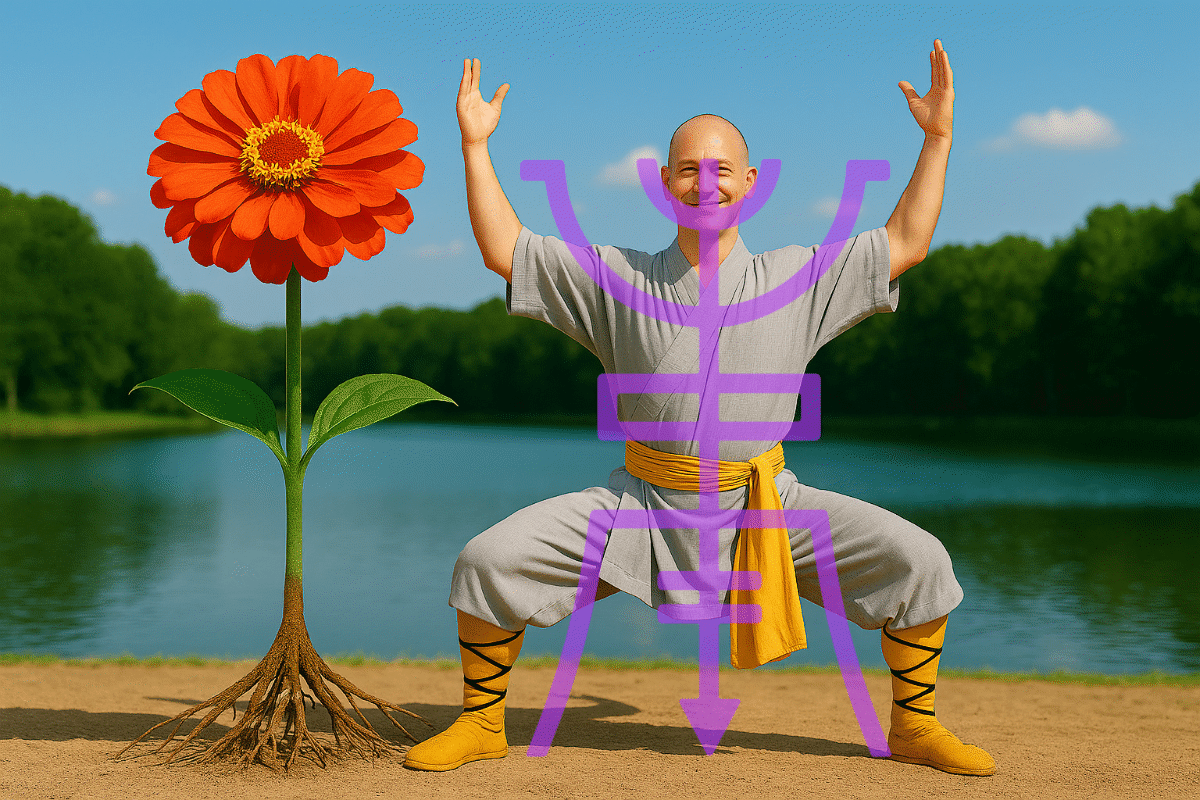
Roots, anchored in the Earth, nourish stability; flowers, close to Heaven, uplift and disperse. Thus, each remedy participates in a subtle dialogue between above and below, between the invisible and the tangible.
The diagram reminds us that health is not simply the absence of disease. It is first an alignment between our deepest nature, our environment, and the laws of Heaven. And the pharmacopoeia is the precise instrument of this restoration.

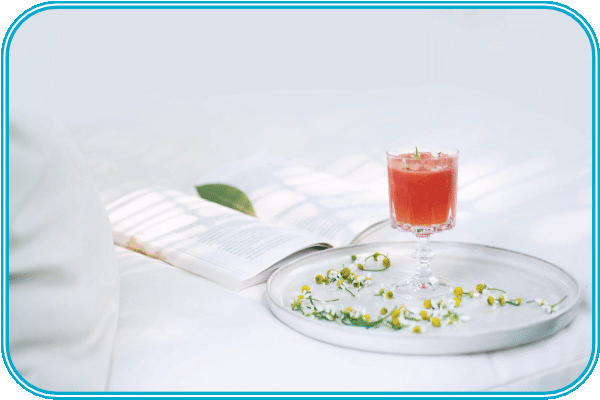
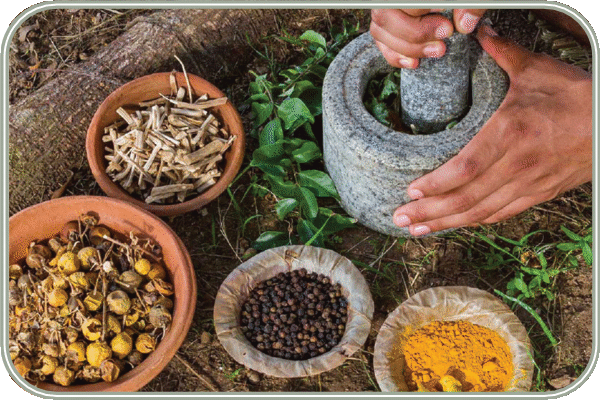

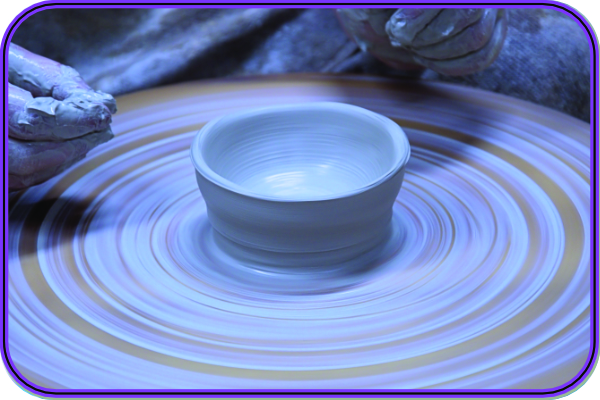


0 Comments